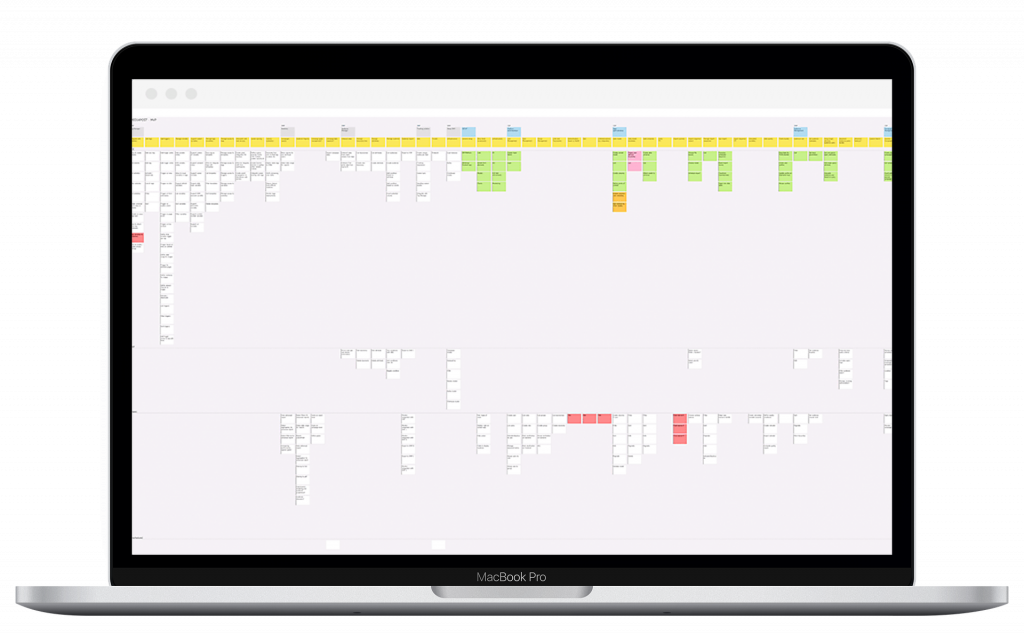Learn more about
the ISOSKELE project

Customer Data Platform (CDP) Scoping for ISOSKELE
This is the story of how Clearcode carried out its MVP Scoping phase to help ISOSKELE define the scope, tech stack and goals of its customer-data platform project (CDP)
Read the case study below to find out how we helped ISOSKELE.
CLIENT
Startup
INDUSTRY
Programmatic advertising
SERVICE
AdTech
COUNTRY
USA
About ISOSKELE
ISOSKELE is one of the leading data-marketing services companies in France. Its marketing and advertising platforms allow advertisers, agencies and publishers to run targeted and personalized marketing and advertising campaigns to improve conversions during a customer’s buying cycle.
Familiar with our previous experience in MarTech development, ISOSKELE partnered with Clearcode to scope the minimum viable product (MVP) of its new marketing platform – an advanced customer-data platform (CDP).

Key points
Product
The client wanted to build an advanced customer-data platform (CDP) based on a well-prepared MVP scope and with minimized risk of project failure.
Solution
We carried out the MVP Scoping phase to set the project
up for MVP development and confirm the technical and business requirements.
Project goal
The goal of ISOSKELE was to define an MVP scope to answer any tech and business-related questions and prepare for the upcoming development phase.
Main challanges
Our main challenges were to define the scope, reduce the project risks, identify and manage the technical and business unknowns, and select the right tech stack.

“Clearcode has proven to be a trusted development partner. They are great problem solvers, responsive, and constantly delivered what we asked for.”
Mohammed Lahboub
TECHNICAL DIRECTOR & BIG DATA EXPERT
The Goal
The main goals of the MVP Scoping phase were to create and confirm the project’s main technical and business requirements, produce an interactive prototype, set the project up for the minimum viable product (MVP) development phase, and establish the relationship between Clearcode and ISOSKELE.
Main challenges
1. Defining the scope
We were presented with a huge scope that in some areas contained a lot of requirements, while others contained a few. With this scope, we had to provide time and cost estimates, create an initial product roadmap, and list project milestones.
2. Reducing risks inside the project due to its size and scope
One of the main goals of the project was to build a marketing platform that consisted of many different functionalities. The main challenge was for us to limit risk by ensuring the project didn’t become too complex or large in scope.
3. Identify and manage the technical and business unknowns
Even though we received a large project scope from the client, there were still a number of questions as well as technical and business unknowns. For example, we were unsure how the various components would transfer data between each other, and there were some details missing regarding the key features.
4. Selecting the right tech stack
When selecting the tech stack (e.g. programming languages, frameworks, infrastructure, and databases) for the project, we had to take into consideration a number of key technical requirements, such as data portability (i.e. transferring data between the different components), handling user profile deduplication and real-time reporting.
What we did
After carefully defining and planning the scope of the project, we set out to solve the challenges and conquer the project’s goals.
Broke the scope down
We analyzed the scope of the project and broke it down into smaller, more manageable sections. We achieved this by utilizing user stories. In the end, we produced 12 components and 500+ user stories.
Aggregated the requirements
In addition to breaking down the project’s scope, we also aggregated the project into separate, independent projects – e.g. a marketing-automation platform, tag manager and audience manager. For each module, we analyzed the priorities, created a product roadmap and produced a story map.
Questionnaires, mockups and screen flows
To eliminate the technical and business unknowns of each module, we created a series of questionnaires for the client to understand how they interpreted the different requirements and goals. From there, we created a decision log, technical mockups, screen flows and carried out a proof-of-concept (POC) to illustrate our understanding and to provide them with a clearer idea of how the different processes would work.
Selected the tech stack
Based on the information gained during the previous step and from various POCs, we selected a tech stack that would meet the requirements and goals of the project. We also created happy paths between the different components to produce the project’s priorities.

Keys to our successful partnership with ISOSKELE
- Our domain knowledge of MarTech development proved invaluable when solving the main technical problems of the project, such as data portability, and allowed us to avoid the steep learning curve that inexperienced development teams face when building marketing-technology platforms.
- Our responsiveness and proactiveness helped us uncover both the technical and business unknowns and identify potential problems.
- Our project-management process allowed us to organize the work, split the tasks between team members and produce deliverables within the required time. This meant that the client didn’t have to worry about managing the process themselves.
- Our MVP Scoping phase established a solid foundation for the project and ensured that everyone involved (both on our side and on the client’s side) is working towards the same goals.
The result
Thanks to the approach detailed above and the MVP Scoping phase as a whole, we have established a common understanding of the project, improved communication between Clearcode and ISOSKELE, reduced the risk of failure, set the project up for MVP development and gained a clear vision of how to proceed with development of the initial phases of the project.